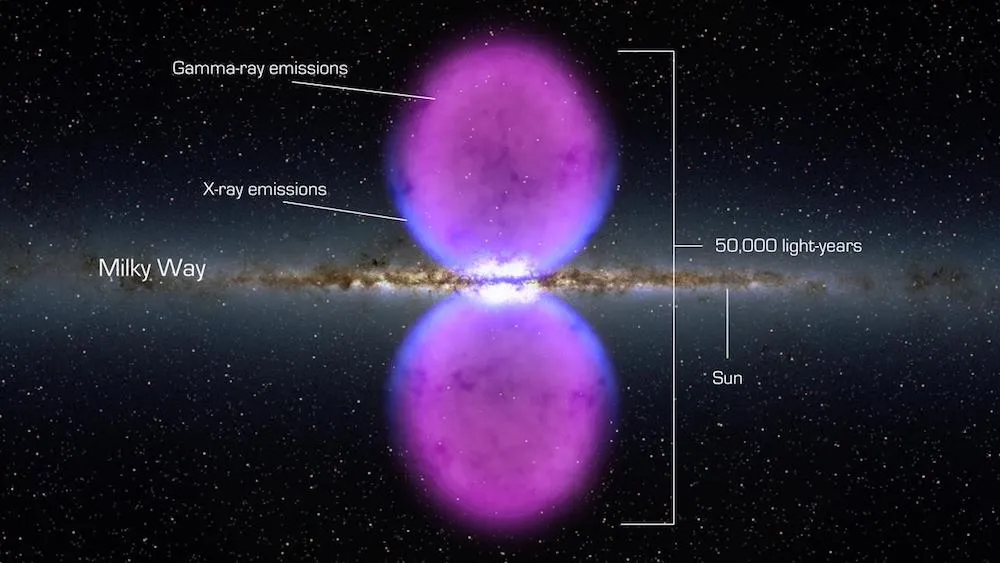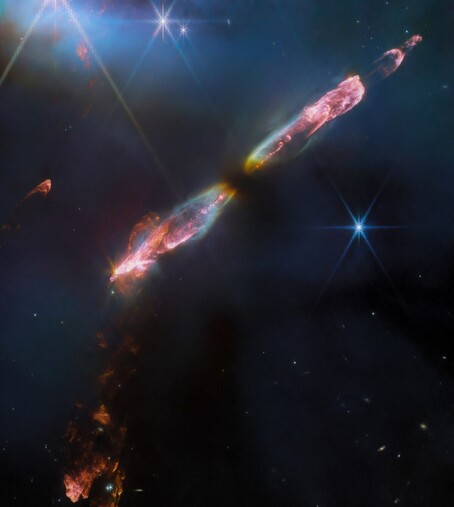johnnydeep wrote: ↑Wed Sep 20, 2023 3:59 pm
AVAO wrote: ↑Wed Sep 20, 2023 11:41 am
Ann wrote: ↑Tue Sep 19, 2023 6:28 am
So where is HH 211 located?
...
Ann
ThanX Ann
Your positioning is definitely correct. The JWST has chosen the most exciting area in the star formation region IC 348. Similar to NGC 1333 (
viewtopic.php?t=43077&sid=8d74b6c90f6c8 ... 8a#p330476), it is teeming with young stars, all of which are in the HH phase. Apparently the jets are currently all aligned so that they don't destroy each other, although these are superimposed in today's APOD. What is surprising to me is that there seems to be a mutual exchange between the cantilevered dust arms of the accretion disks.
Jac
biggg: https://live.staticflickr.com/65535/532 ... 897c_o.jpg
jac berne (flickr) DSS2 red / AllWISE MidIR / JWST Nircam
STScI Image: ESA/Webb, NASA, CSA, T. Ray
9ecdfc930cf87bed[1].png
https://files.mastodon.social/cache/med ... f87bed.png
Copyright: Yuval Harpaz
Which cantilevered dust arms of which accretion disks?
In today's apod you can see dark brown clouds of dust against a dark "blue" background (gas and very thinly distributed dust). If you look at the scene from further away, you get the impression that actual "dust rivers" exist between the young HH stars, which supply the accretion disks with new material or allow them to form in the first place. However, this is nothing more than a hypothesis. Today's APOD only confirmed to me that this could be correct.
HH-222: The Waterfall Nebula Source: http://annesastronomynews.com compare APOD 2011 October 24 https://apod.nasa.gov/apod/ap111024.html
Image Credit: Z. Levay (STScI/AURA/NASA), T.A. Rector (U. Alaska Anchorage) & H. Schweiker (NOAO/AURA/NSF), KPNO, NOAO
Google Bard (AI):
Accretion disks form in Herbig-Haro objects when a young star attracts material from a surrounding cloud of dust and gas. The cloud is collapsed by the star's gravity, and the material accumulates in a disk around the star.
The exact way in which accretion disks form in Herbig-Haro objects is not yet fully understood. One possibility is that the disk is created by the turbulence in the dust and gas cloud. The turbulence causes the material in the cloud to swirl around and eventually collect in a disk around the star. Another possibility is that the disk is formed by the rotation of the star. The rotation causes the material in the cloud to deflect along the star's rotation axis. When the material then hits the star, it slows down and forms a disk. Regardless of the exact form of formation, it is clear that the accretion disks of Herbig-Haro objects play an important role in the development of young stars. The material in the disk is eventually absorbed by the star and serves as fuel for stellar fusion. Here is a more detailed overview of the formation mechanisms of accretion disks in Herbig-Haro objects:
Turbulence mechanism: In the turbulence mechanism, the accretion disk is created by the turbulence in the dust and gas cloud. The turbulence causes the material in the cloud to swirl around and eventually collect in a disk around the star.
The turbulence can be caused by various factors such as: B. by the gravity of the star, by the movement of the cloud or by collisions between cloud fragments.
Rotation mechanism: In the rotation mechanism, the accretion disk is created by the rotation of the star. The rotation causes the material in the cloud to deflect along the star's rotation axis. When the material then hits the star, it slows down and forms a disk. The star's rotation is generated by the accretion of material from the cloud. The more material the star attracts, the faster it rotates.
Mixed model: It is likely that both mechanisms are involved in the formation of accretion disks in Herbig-Haro objects. The turbulence mechanism is probably responsible for the formation of the initial disk, while the rotation mechanism is responsible for the further development of the disk.
 HH 211: Jets from a Forming Star
HH 211: Jets from a Forming Star






